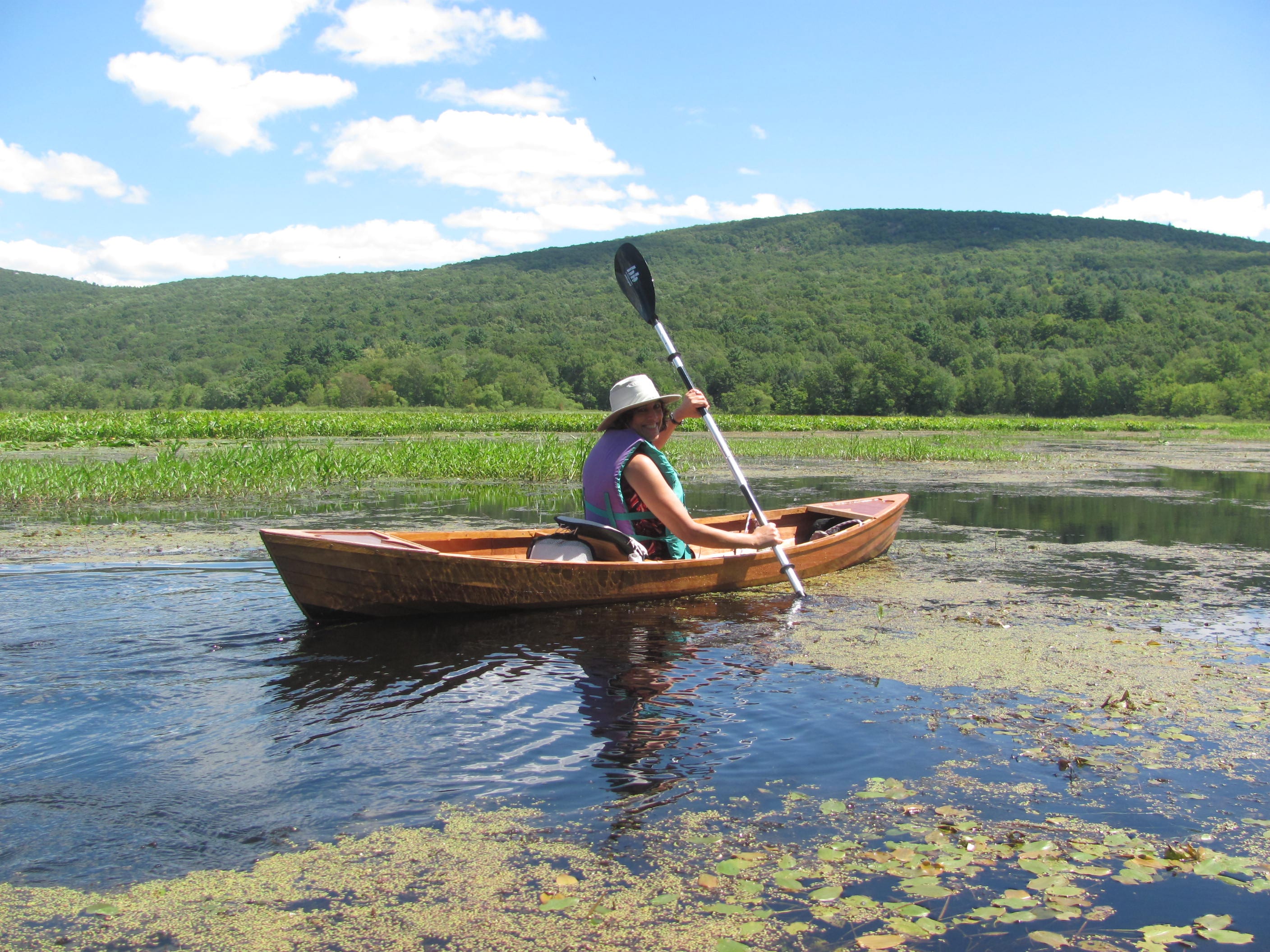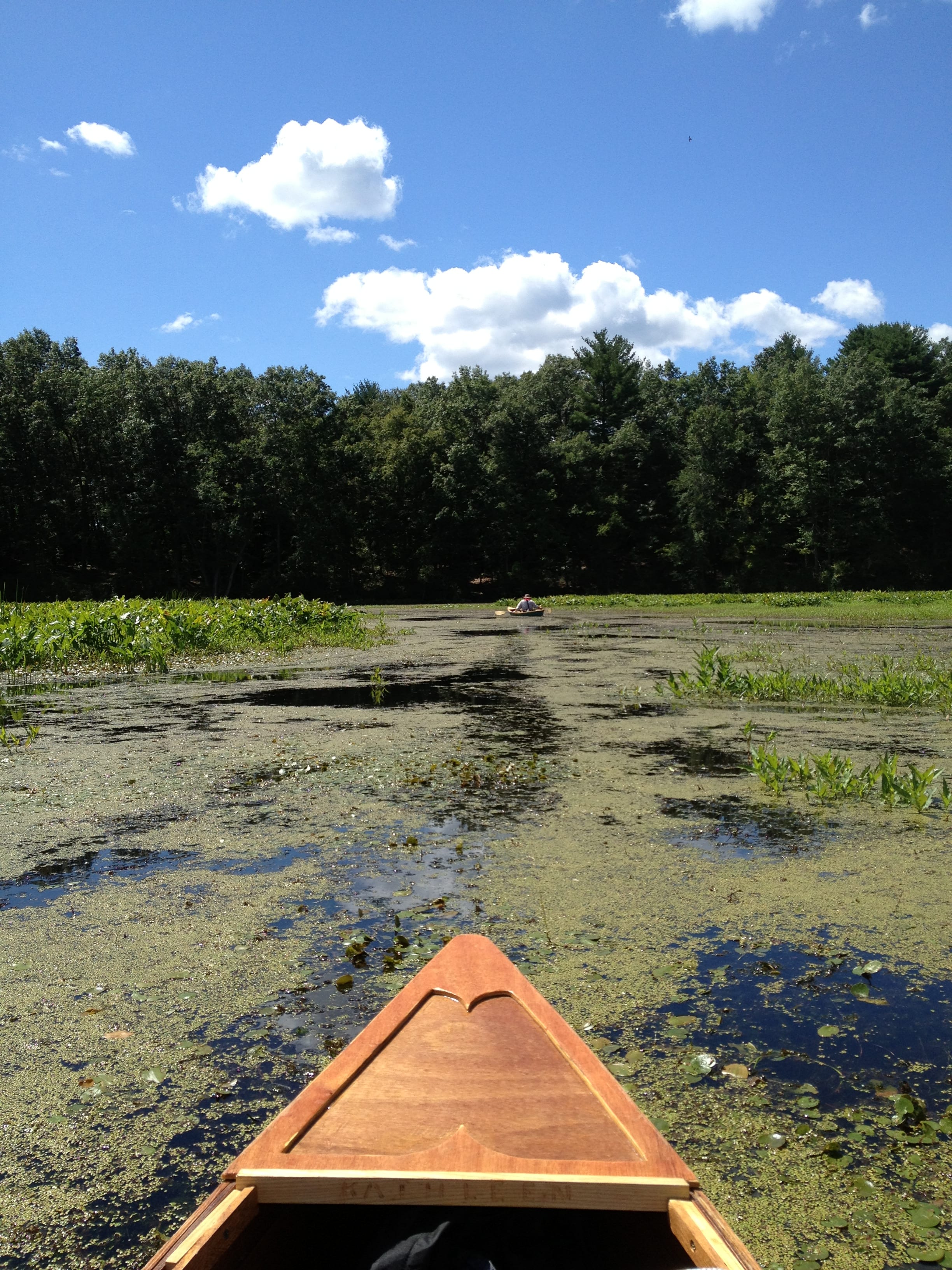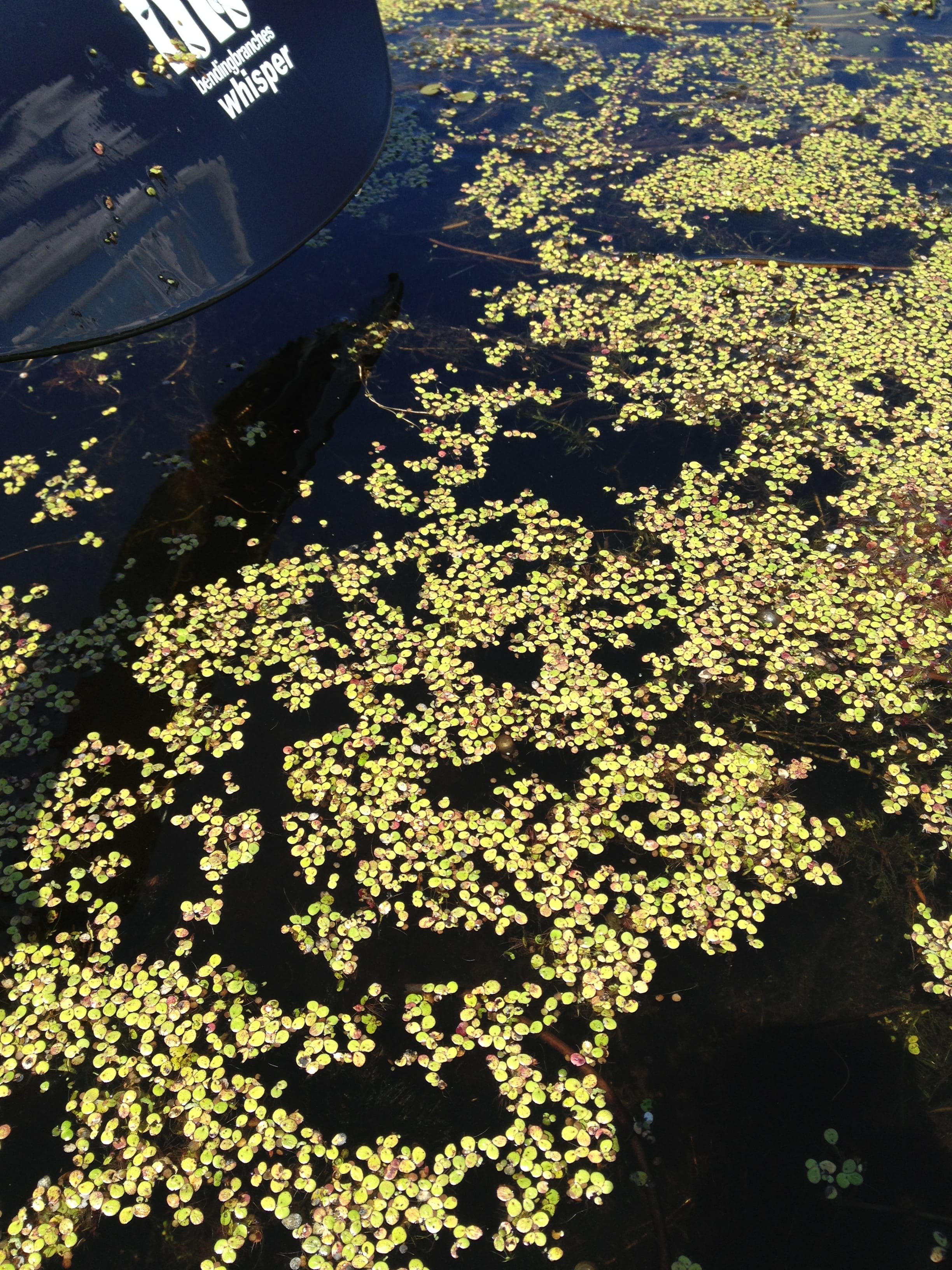Yesterday was simply a gorgeous day in the Northeast – sunny, dry, and about 75 degrees. No better day would exist to go exploring the Basha Kill by canoe. The Basha Kill is a wildlife management marsh located a few miles off of Exit 113 of Route 17 in New York. Having never been there before, I paid close attention to the sights and sounds and feelings, and I’m going to share them here.
Watch out for Leeches and Snakes!
Before launching, we met a few fishermen who were telling another visitor to the area that the water was filled with snakes and leeches and therefore, anyone going in it needed to be very cautious. In fact, they added, the snakes could crawl into your canoe!
My suspicion was that the fishermen didn’t want a lot of people in the water; hence the elaborate scheme to keep us out. And while the marshland did look as though there could be snakes and leeches, the gorgeousness called us to explore anyway, so off we went.
So what did we see, if not leeches or snakes?
 The organization’s web site provides a lot of information about the area wildlife. The primary breeding ducks are wood ducks, although mallards, black ducks, and two dozen other species also live in the area. There are hawks, screech owls, barred and great horned owls, ospreys, and a pair of eagles. In addition, over 30 species of fish are in the area, including bass, trout, bowfin, blue spotted sunfish and ironcolor shiner. There are 40 species of butterflies and various insect families. The area also is home to reptiles, amphibians, muskrat, beaver, deer, raccoon, possum and fox, to say nothing of the marsh vegetation that is home to all these animals and insects.
The organization’s web site provides a lot of information about the area wildlife. The primary breeding ducks are wood ducks, although mallards, black ducks, and two dozen other species also live in the area. There are hawks, screech owls, barred and great horned owls, ospreys, and a pair of eagles. In addition, over 30 species of fish are in the area, including bass, trout, bowfin, blue spotted sunfish and ironcolor shiner. There are 40 species of butterflies and various insect families. The area also is home to reptiles, amphibians, muskrat, beaver, deer, raccoon, possum and fox, to say nothing of the marsh vegetation that is home to all these animals and insects.
We only saw an extremely small segment of this list. Coming around a curve in the meandering swamp, we startled a gaggle of Canadian Geese (not even listed above!) into flight. We heard birds singing around us. Various insects, mostly dragonflies and damselflies, flitted about, often landing on my legs and arms. A few distant frogs croaked from time to time. We passed a beaver lodge, but saw no beavers. In terms of fish, I stopped several times, and just looked downwards. There were tons, and I mean TONS, of extremely small minnow-type fish swimming around. We watched a few fishermen/women fishing off a bridge, and in the space of the two or three minutes we were watching, one of them caught two fish (and then threw them back). So wildlife is definitely all around the Basha Kill area.
Canoeing through oatmeal and lentil soup
So how was the canoeing?
 In the spring time or early summer, I would bet it was a lot different than a mid-August trip. There is a lot of vegetative growth in the water; and by the time we were there on August 15th, the canoeing was a bit tricky. We put our canoes in at the northern edge of the lake, and we headed south. The trip on that end of the marsh meandered through swamp rushes, taking us on a never ending trip of “s” turns. A few times we had to stop and try to figure out which way to go. At a few points, we needed to really pull the paddles through the water and vegetation; sort of like stirring a thick bowl of oatmeal. At other points, the top of the water was filled with tiny leaves; that looked similar to skimming along the top of a bowl of lentils. This might sound as though it was a distraction from our enjoyment, but it just added to it.
In the spring time or early summer, I would bet it was a lot different than a mid-August trip. There is a lot of vegetative growth in the water; and by the time we were there on August 15th, the canoeing was a bit tricky. We put our canoes in at the northern edge of the lake, and we headed south. The trip on that end of the marsh meandered through swamp rushes, taking us on a never ending trip of “s” turns. A few times we had to stop and try to figure out which way to go. At a few points, we needed to really pull the paddles through the water and vegetation; sort of like stirring a thick bowl of oatmeal. At other points, the top of the water was filled with tiny leaves; that looked similar to skimming along the top of a bowl of lentils. This might sound as though it was a distraction from our enjoyment, but it just added to it.
 Canoeing at this time of year turned out to be a great workout! The benefits of thick vegetation in the water: 1) you can get a great bicep/tricep workout, 2) you are forced to move slowly so you can pay attention to the beauty around you, and 3) if you want to take a picture, you can just stop in the vegetation; your canoe won’t move from that spot.
Canoeing at this time of year turned out to be a great workout! The benefits of thick vegetation in the water: 1) you can get a great bicep/tricep workout, 2) you are forced to move slowly so you can pay attention to the beauty around you, and 3) if you want to take a picture, you can just stop in the vegetation; your canoe won’t move from that spot.
Will we go again?
Yes! Not only have we only seen a very small portion of the wildlife, we only traversed about a third of the Basha Kill preserve. Next time, we’ll start at the south end and work our way north, and I’ll share the differences we encounter on that end.
If you want to go, click this link for directions.
ENJOY!